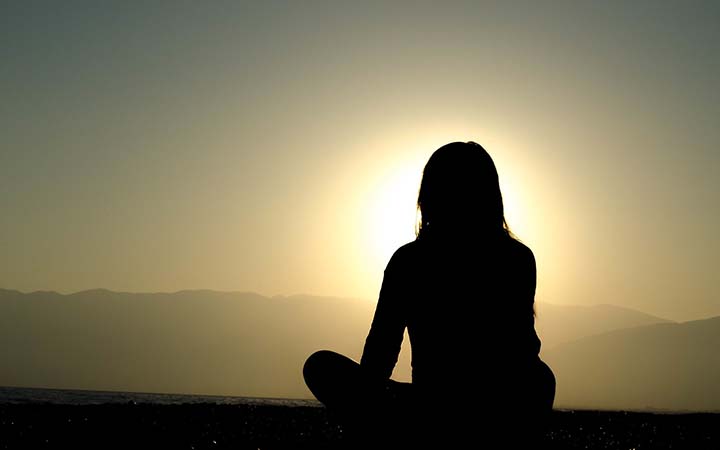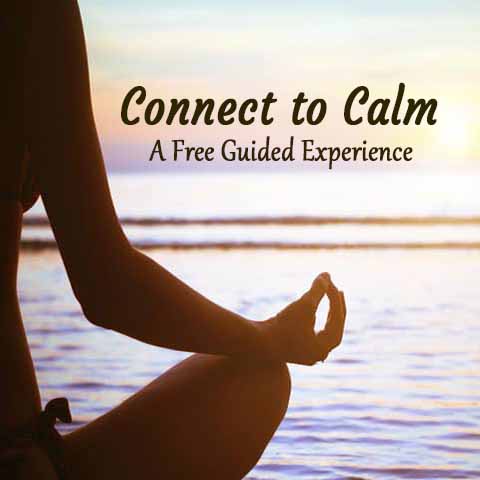What is meditation?
The word meditation likely brings up many images or ideas about what that word means. The truth is that it means different things to different people. With that in mind, let’s take a look at meditation.
When most of us think of meditation, we think of stopping the mind, a meditation technique (such as watching a flame or repeating a mantra or watching the breath), or of a state of constant bliss. In truth, these things are part of meditation, but they are not the whole picture.
For me, the goal of meditation is awareness; awareness of our thoughts, our bodies, our emotions, and our spiritual essence. Meditation is a practice that builds and enhances awareness. That is its true purpose, to build and enhance awareness. And that is exactly what it does.
Meditation is not connected to or owned by any religious or spiritual group although many religious and spiritual groups include meditation in their practices. Therefore, meditation, in and of itself is non-denominational.
Meditation is a balancing tool.
Meditation is particularly helpful in balancing the mind. Think of thoughts as activity in the mind. Then think of no thought as inactivity of the mind. As you go through your day, your mind thinks thousands of thoughts. Some of these are conscious and chosen, but many are unconscious and habitual. Some thoughts are positive and life enhancing; some are negative and work to lower the quality of your life. As most of our thoughts are unconscious, habitual and negative thoughts, so we need to bring more focus to chosen thoughts, a chosen focus and/or positive thoughts. If we want to create balance between activity and inactivity we need to focus on inactivity.
How many of you have tried to stop the mind? It really doesn’t work. The mind is like any other organ in the body. It has a job to do and its job is to think, just as the heart’s job is to pump blood and oxygen through our body 24/7. So, to try to stop the mind is a losing endeavor and we can become caught up in fighting with the mind, which is not helpful when “meditating.”
That is where a meditation technique comes in.
A meditation technique initially allows us to redirect our focus away from the thoughts in the mind to the meditation technique, thereby breaking up the chain of thoughts. This helps us to become more detached from our thoughts. Initially when we sit to meditate, we will often lose our focus very quickly. At this point, most of us berate ourselves for losing our focus. But not to worry, losing your focus is part of the process. The important thing is that as soon as you notice that you have lost your focus, you simply bring your focus back to the technique. It is as simple as that. This has a twofold purpose. Becoming aware that you are thinking again and have lost your focus builds awareness. Bringing your focus back to your technique begins to balance the mind.
What is the best meditation technique?
There are many meditation techniques and you may wonder which the best technique is. We are going to bring our idea of bio-individuality to meditation just as we have with all the other topics we have discussed. The perfect meditation technique for you will be the one that works the best for you. Period.
But, where to start? What meditation technique will work the best for you? Consider how you process life. Are you more visually oriented, mentally oriented or tactile (sensation) oriented? If you are visually oriented, you might want to choose a visual meditation technique such as gazing at a candle flame or imagining a particular image. If you are mentally oriented, you might choose a word, affirmation, or mantra that resonates with you. If you are tactile oriented, you might want to choose a sensation such as feeling the breath moving in the body or other sensations in the body.
Experiment with different techniques and see which one works the best for you. How do you know if it works? You will notice an increased sense of relaxation or calmness or balance. As you continue your practice, you will notice periods of stillness or quietness followed by periods of activity. The periods of stillness or quietness increase, you will notice a detachment from your thoughts and even from the meditation technique.
Transcending the technique.
Once you can remain the detached witness, the meditation technique becomes less important. You can use it as a tool to get you to the place of detachment, stillness and quietness. Once there, simply enjoy that state as long as it lasts. When you lose it, employ your meditation technique until you are again detached. This will lead to a greater and greater sense of witness consciousness, where you are aware of the thoughts, sensations and feelings oscillating with periods of stillness or inactivity.
At this point, you are aware of the polarities of activity and inactivity. You become more aware of the stillness that exists within you at all times, a stillness that is there throughout the cycles of activity and inactivity. And eventually you realize that the stillness is your spiritual essence. That it is always with you, has always been with you and will always be with you. It is you. Then activity and inactivity doesn’t matter. It isn’t you. You can simply watch it play out from a detached perspective.
Letting go of control; reclaiming conscious choice.
This might seem like losing control and in a way it is. You stop trying to control things in your life. You have greater awareness of your thoughts, emotions, sensations, and spiritual essence. As your awareness increases, you have the ability to consciously choose rather than to unconsciously react to happenings within you and in your world. You become more aware of how your thoughts, feelings, words and actions impact you and the world around you. As that awareness increases, you begin to make more and more choices that will bring you back to a place of balance, calmness, relaxation, peace and harmony. Once you have tasted balance, peace and harmony, you will want more of it. It will become more important to you than other things that you thought were important that actually pull you away from inner peace. It is a journey, not an event.
In truth, meditation is very simple, but not always easy. It is helpful to have a teacher or group to assist you on the journey. Believe me, the mind will draw you away and it is helpful to have someone or a group to pull you back.
Contemplation for this week. Be aware of the following this week:
- Are my thought primarily negative or positive?
- How busy is my mind . . . just notice the busy-ness.
- Am I able to redirect my mind to thoughts of my choosing?
- How do I naturally relate to the world? Visually, mental, or sensory?
- Try sitting for 5 minutes each day just watching your breath. What happens?
Please post questions or comments below or on Facebook.


